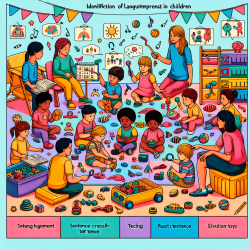Introduction
As practitioners dedicated to enhancing children's outcomes, understanding the broader socio-economic factors influencing health behaviors is essential. The study "Investigating socio-economic-demographic determinants of tobacco use in Rawalpindi, Pakistan" offers valuable insights into the factors driving tobacco use in this region. By applying these findings, practitioners can enhance their strategies and interventions, ultimately fostering healthier environments for children.
Key Findings from the Study
The research highlights several socio-economic and demographic determinants of tobacco use in Rawalpindi:
- Prevalence: 16.5% of the population uses tobacco daily, with higher rates among men (33%) compared to women (4.7%).
- Modes of Use: Cigarette smoking is predominant (68.5%), followed by oral tobacco (13.5%) and hukka (12%).
- Demographic Factors: Tobacco use is more prevalent in rural areas and among those with lower education levels.
- Gender Disparity: Men are significantly more likely to use tobacco than women, with an odds ratio of 12.6.
Implications for Practitioners
Understanding these determinants can guide practitioners in developing targeted interventions. Here are some strategies to consider:
- Community Education: Develop community-based programs to raise awareness about the health risks of tobacco use, particularly targeting rural areas and populations with lower education levels.
- Gender-Specific Interventions: Create tailored interventions for men, who are at a higher risk of tobacco use, to address cultural and social norms that may contribute to this behavior.
- Media Campaigns: Utilize mass media, including radio and television, to disseminate counter-advertisements that highlight the dangers of tobacco use.
- School-Based Programs: Implement educational programs in schools to inform children about the risks of tobacco use and passive smoking, fostering a smoke-free environment.
Encouraging Further Research
The study's findings underscore the need for ongoing research to explore the complex interplay of socio-economic factors and tobacco use. Practitioners are encouraged to contribute to this body of knowledge by conducting local studies and sharing insights with the broader community. Collaboration with global initiatives, such as the Global Tobacco Research Network, can further enhance these efforts.
Conclusion
By leveraging the insights from this study, practitioners can develop more effective interventions to combat tobacco use in Rawalpindi and beyond. Through targeted education, media campaigns, and community engagement, we can create healthier environments for children and reduce the burden of tobacco-related diseases.
To read the original research paper, please follow this link: Investigating socio-economic-demographic determinants of tobacco use in Rawalpindi, Pakistan.










